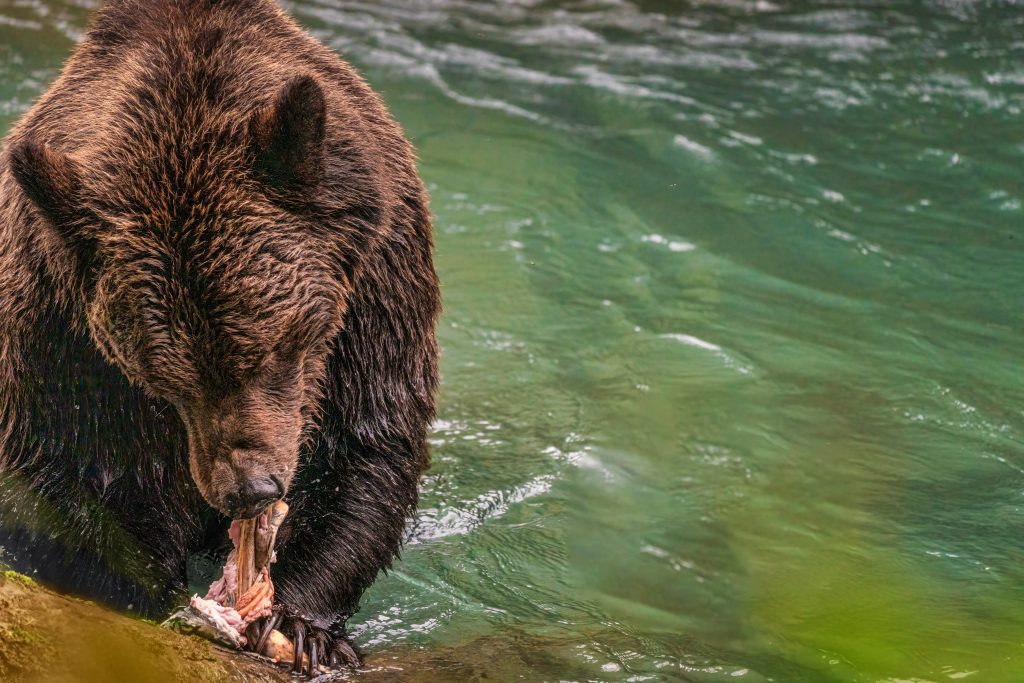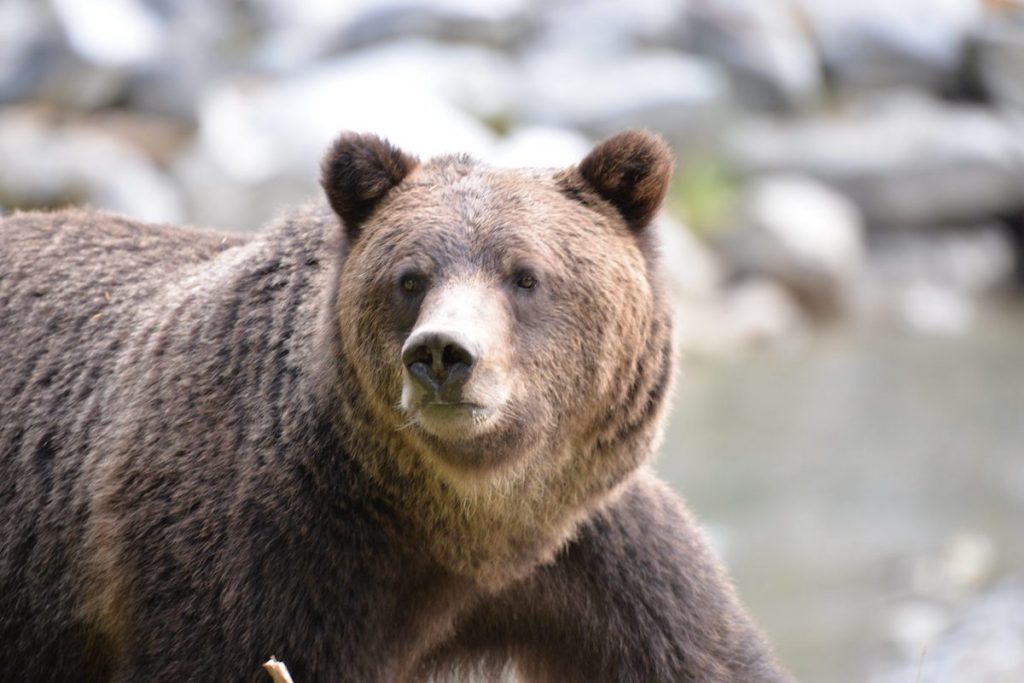Grizzly Bears
Latin name: Ursus arctos horribilis
Homalco (AYʔAJ̌UΘƐM) name: χawgəs, pronounced [x-aw-gus]
Magnificent grizzlies once roamed the continent of North America from Northern Alaska to the Great Plains to Central Mexico. They could wander, undisturbed, for hundreds of kilometres, with each grizzly’s habitat covering up to 700 square kilometres. Their impressive population used to number 50,000+ but now, due to habitat loss, hunting, and humans they are mostly found in the Pacific Northwest and their numbers have decreased significantly.
Across British Columbia, these majestic beasts reside in the wildest areas, from BC’s Coast and Mountains, Central Interior, Sub-Boreal Interior, Southern Interior Mountains and Northern Boreal Mountains Eco provinces.

Grizzly Bears’ Habits and Diets
Feeding on up to 200 salmon a day as well as carrion, trout, small rodents, insects, berries, leaves and roots, grizzly bears can grow to two and a half metres long! The massive males can weigh up to 440 kilograms (970lbs) and their smaller female counterparts can weigh up to 200 kilograms (440lbs)! Despite their impressive size, grizzly bears can run up to 55 kilometres (34 miles) per hour.
Although the bears can eat an unimaginable amount of salmon during the spawning season, they are mostly vegetarians with plants making up 80-90% of their diet. In autumn, a grizzly can eat 200,000 berries in one day, we counted (just kidding). They forage for these berries using their excellent sense of smell.

Lifecycle of a Grizzly
During the long Canadian winters, grizzly bears cozy up in caves, tree hollows, and holes on steep slopes, before entering into a deep sleep called torpor (not true hibernation). Cubs are born in these dens with their mother from January to March, while in their dens.
When temperatures begin to warm, the grizzlies and their cubs emerge from their slumber. The adorable cubs stay with their mother for anywhere from 8 months to 3 years before venturing out on their own.
Grizzly bears are extremely intelligent and can live 25 to 30 years in the wild, roaming and foraging for food. Unfortunately, the bears are threatened by habitat loss from logging and development and are also hunted for their hides and for trophies which makes their average life span much shorter.
Grizzly Bear Conservation Efforts
Grizzly bears are an important part of the ecosystem and are greatly respected by the Homalco peoples. At Homalco Wildlife and Cultural Tours, we work to ensure that these extraordinary animals continue to thrive in beautiful BC.
Despite growing grizzly populations, due to ongoing conservation efforts, the Committee on the Status of Endangered Wildlife in Canada (COSEWIC) still considers grizzly bears “Special Concern” which means that they are particularly sensitive to human activities or natural events but are not endangered or threatened wildlife species.
To assist in our conservation efforts, we support the Commercial Bear Viewing Association of BC (CBVA) which was formed to promote sustainable bear viewing in British Columbia and aid in protecting wild bears and their ecosystems. The CBVA was established in 2001 and advocates for bears through science-based research.
Our job as CBVA members and wildlife guides is to create as little impact on the animals as possible. Instead of getting guests as close to wildlife as possible, we show them wildlife in their most natural habitat (eating, drinking, sleeping or travelling), without disturbing them.
More than 50 grizzly bears return to the area each year to feast on salmon so we also focus on replenishing wild salmon stocks in the Orford River, encouraging more bears to return. Preserving and enhancing stocks is fundamental to the survival of the bears and the overall health and prosperity of the forests surrounding the rivers.


